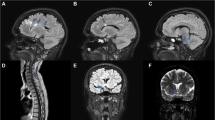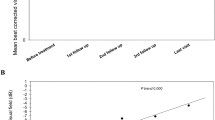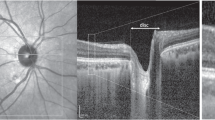Abstract
Aim To review and set guidelines for all neuroradiological referrals from the ophthalmic service in a typical UK district general hospital.
Method Patients referred for diagnostic neuroimaging were identified from the radiology database over a 1-year period. A case note review was undertaken. The clinical indication for and results of neuroimaging performed were ascertained. The justification for neuroimaging was determined.
Results Of the total 31 411 patients that were seen in the eye department, 103 (0.32%) had diagnostic neuroradiological imaging performed. The indications for imaging were: suspected compressive lesion of the anterior visual pathway in 57 patients (55.3%), acquired ocular motility disturbance in 20 patients (19.4%), suspected orbital pathology in 11 patients (10.6%), cerebrovascular accident in nine patients (8.7%), and six patients (5.8%) were imaged for either headache or sinusitis. Radiological lesion detection rate was highest for cerebrovascular accident (88.8%) and lowest acquired for ocular motility disturbance (4.9%).
Conclusion Ophthalmic requests for diagnostic neuroimaging were found to be unnecessary in only 9% of patients. Guidelines for the referral of ophthalmic patients for neuroimaging are discussed.
Similar content being viewed by others
Log in or create a free account to read this content
Gain free access to this article, as well as selected content from this journal and more on nature.com
or
References
Gans M . Neuroimaging techniques for the ophthalmologist. Can J Ophthalmol 1997; 32(4): 277–281.
Slamovits TL, Gardner TA . Neuroimaging in neuro-ophthalmology. Ophthalmology 1989; 96(4): 555–568.
Grossman RI, Lynch RM . Neuroimaging in neuro-ophthalmology. Neurol clin 1983; 1(4): 831–857.
Royal college of Radiologists London. Guidelines for Doctors Making Use of Clinical Radiology, 4th Ed. 1998, p. 13.
Ionising Radiation (Medical Exposure) Regulations 2000, Statutory Instrument No. 1059, HMSO, 2000.
Lewis MA, Goldstein S, Baker RS . Magnetic resonance imaging of the posterior fossa in ocular motility disorders. Four case studies. J Clini Neuro Ophthalmol 1987; 7(4): 235–2409.
Kobashi R, Ohtsuki H, Hasebe S . Clinical studies of ocular motility disturbances. Part 1. Ocular motility disturbances: causes and incidence. Jpn J Ophthalmol 1996; 40(4): 502–510.
Sleep T, Wirix M, Cole M, Debney N . The use of CT and MRI scanning within ophthalmology. In: Audit News (Winter Ed). London: The Royal College of Ophthalmologists, 2001; 9–10.
Acknowledgements
This work was presented at the North of England Ophthalmic Society, Manchester, June 2000.
Author information
Authors and Affiliations
Corresponding author
Rights and permissions
About this article
Cite this article
Mathews, J., Mathews, D., Walker, S. et al. Can ophthalmic requests for neuroimaging be improved?. Eye 18, 290–292 (2004). https://doi.org/10.1038/sj.eye.6700627
Received:
Accepted:
Published:
Issue date:
DOI: https://doi.org/10.1038/sj.eye.6700627
Keywords
This article is cited by
-
Preauthorization
Current Ophthalmology Reports (2018)



